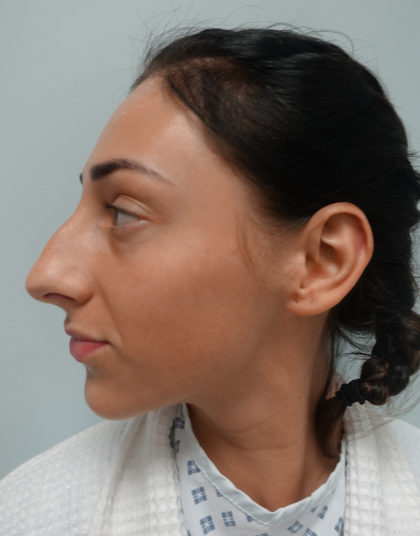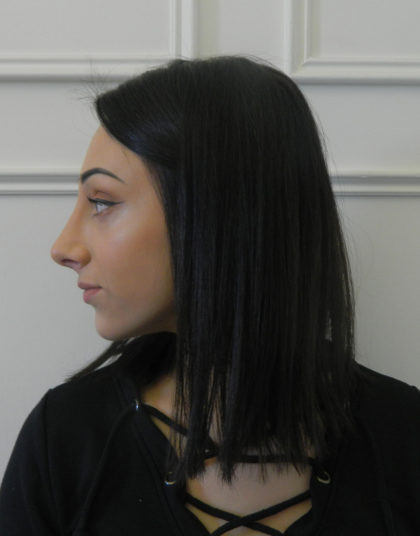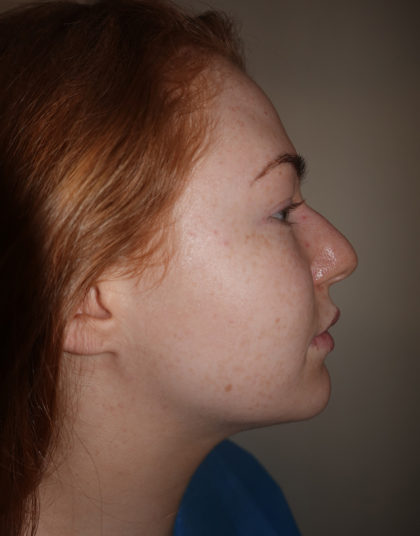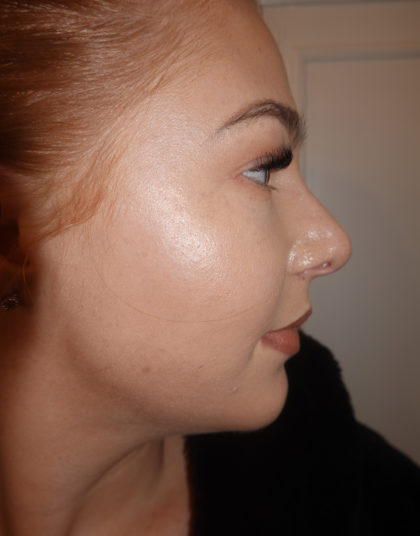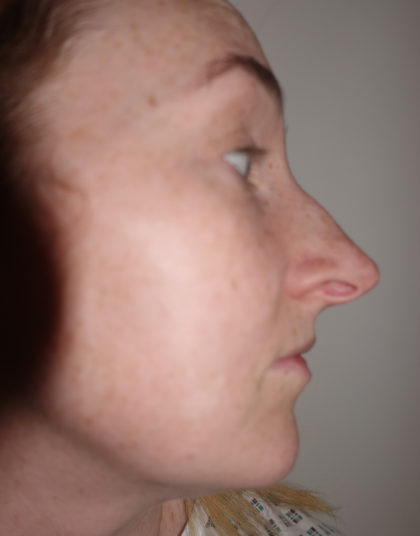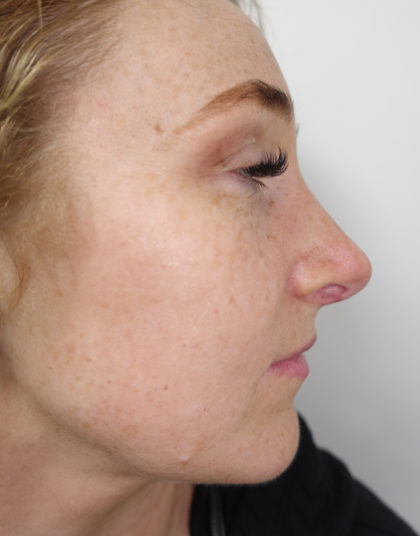Advanced Techniques for Revision Rhinoplasty
Conveniently located to serve the areas of London and Manchester

Advanced techniques for revision rhinoplasty are techniques that include remodelling, sculpting and grafting designed to resolve issues that resulted from an inadequate first procedure. These methods correct unfavourable outcomes in initial rhinoplasties.
Before and After Photos
Contents
- 1 Book your consultation now
- 2 Before and After Photos
- 3 Advanced Nose Restoration for a Natural-Look
- 4 About Advanced Revision Rhinoplasty in England
- 5 Benefits
- 6 Complications that Require Advanced Revision Rhinoplasty
- 7 Your Consultation with Dr Frati
- 8 Careful Preparation
- 9 Advanced Revision Rhinoplasty Techniques
- 10 Healthy Recovery
- 11 Breathtaking Results
- 12 FAQ
- 13 References
Advanced Nose Restoration for a Natural-Look
Rhinoplasty is one of the most revised techniques in cosmetic rhinoplasty. Studies estimate that 5-15% of all rhinoplasties are revisions.[1] This number is extremely high for modern-day cosmetic surgeries. If you’ve undergone rhinoplasty and the results were less than you imagined, contact Dr Riccardo Frati. He can recreate a natural nose after an unfavourable outcome. If you wish to converse with an expert in the intricacies of revision rhinoplasty, contact Dr Frati online. You may also call one of his offices to arrange an appointment.
London: 0203 633 2619 or 0203 633 2619
Manchester: 0161 327 2139
About Advanced Revision Rhinoplasty in England
Rhinoplasty is often considered the most complicated procedure in cosmetic surgery. The nose sometimes heals in mysterious ways so that even a good surgeon might have difficulty predicting results. Revision rhinoplasty can be even more complicated than the initial procedure and should only be performed by experts in rhinoplasty such as Dr Frati. A thorough diagnostic examination is the critical first step in revision rhinoplasty. Dr Frati will assess the current state of your nose and evaluate options for revision.
Benefits
- More natural, proportionate nose
- Improve nasal function
- More symmetrical and balanced nose
- Reduce visible scarring
- Resolve imperfections from initial procedures
Complications that Require Advanced Revision Rhinoplasty
- Over or under reduction of the nasal bridge
- Unnatural or overdone cosmetic shaping
- Blocked nasal airways
- Collapsed cartilage
- Broken nasal bones
- Excessive scar tissue
- Collapsed nasal valves
- Crooked nasal tip
- Healing complications
- Persistent Asymmetry
- Saddle nose deformity
- Excessive or underdeveloped tip projection
Realistic expectations are essential for a successful rhinoplasty. Candidates that bring in a picture of their friend or a celebrity’s nose may court disappointment. There is no single “perfect nose” that you can select off-the-peg. The nose that looks great on a celebrity might look fake and artificial on your face. The nose must harmonize with all your other facial features and proportions to look attractive. Your expectations should be discussed during your consultation. But please don’t bring pictures of other people’s noses.
Your Consultation with Dr Frati
Dr Frati unifies a mastery of the human anatomy with the vision of an accomplished sculptor. During your consultation, you should share all the details of your original procedure so Dr Frati has a thorough understanding of your experience and hope it can be improved upon. You’ll find a compassionate and empathetic listener in Dr Frati.
Dr Frati will also discuss all your aesthetic goals with you in an effort to devise a revision strategy custom-tailored to your unique needs.
Dr Frati possesses impeccable credentials. He studied under the master surgeon Prof Marco Gasparotti learning how to elevate cosmetic surgery into a living art form. He’s completed thousands of cosmetic procedures. In addition, he’s given presentations and taught around the world including hotbeds of cosmetic surgery such as Rio de Janeiro and New York. If you need to consult with a master of revision rhinoplasties, contact us online or call our offices in the UK.
London: 0203 633 2619 or 0203 633 2619
Manchester: 0161 327 2139
Careful Preparation
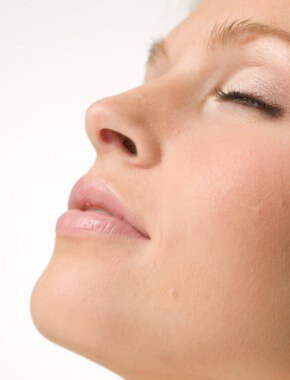
Even if you are unhappy with your original rhinoplasty, it’s important to let your nose completely heal before going to a consultation for a revision. It’s necessary to allow your nose the necessary time to heal and settle before we can devise an accurate revision plan. A diagnostic endoscopy is typically the first step required in revision rhinoplasty since it’s the most reliable examination method for discovering all the problems with the initial rhinoplasty.
Advanced Revision Rhinoplasty Techniques
For advanced revision rhinoplasties, open rhinoplasty is preferred. Open rhinoplasties allow much more flexibility and better access to resolve issues that result from an unfortunate rhinoplasty.
Hump Remodeling
Osseocartilaginous vault surgery is a key component to properly reducing a dorsal hump on the nose. The nasal hump consists of both bone and cartilage. If the nasal hump was either over or under corrected, osseocartilaginous vault surgery can correct this issue. There are many techniques that Dr Frati may employ to correct an undesirable hump reduction outcome.
Hump Resection – Hump resection focuses on separating the cartilaginous part of the nasal hump in order to reshape it. Depending on the precise issue the patient has with her/his nose, different tools will be employed. For example, a common beginner mistake in rhinoplasties is over-resecting the hump which results in a phenomenon called saddle nose. For mild to moderate hump corrections, a rasp is usually the best tool. Under-resection is another common beginner mistake where careful use of the rasp is necessary.
Grafts and Reshaping
When correcting a camelback hump, the most effective solution is often utilizing grafts to smooth the profile of the nose. One problem that occurs in failed rhinoplasties is the open roof deformity, used when the bridge of the nose appears very flat after a dorsal hump is removed. This effect usually occurs due to inadequate grafting and can be corrected with proper grafting techniques.
The most effective types of grafts for revision rhinoplasty are autografts – grafts taken from a patient’s own bone and cartilage.[4]
Spreader grafts are an excellent answer to fix an open roof deformity and treat concavities.[2] Inverted V deformity is another common issue when adequate care was not taken in an initial rhinoplasty. Inverted V means when the cartilage on the side of the bridge appears sunken or collapsed and forms an inverted V shape. Spreader grafts prove essential for delicate remodelling necessary to correct an inverted V. Correcting an inverted V deformity is an expert class procedure that should only be performed by master-level cosmetic surgeons such as Dr Frati.
Alar rim abnormalities are another common beginner problem in rhinoplasty. The alar rims are the parts of the nose that surround the two nasal openings. To fix alar rim abnormalities, the use of composite grafts best solve the problem.[3]
Micro-Osteotomies
Osteotomies and micro-osteotomies remodel the delicate bony pyramid structure in the nose. Micro-osteotomies are a set of advanced refinement techniques used to manage the delicate, thin, and brittle bones in the nose. Sometimes during an initial rhinoplasty, insufficient attention was paid to correcting asymmetry in the bony pyramid which prodcued an unbalanced result. During revision rhinoplasty, careful refinement of the bony pyramid can correct asymmetries that persist due to the bony pyramid. Piezosurgery is one advanced technique that integrates electric vibrations to skillfully reshape the bony structure of the nose.[5]
Radix Nasi Correction
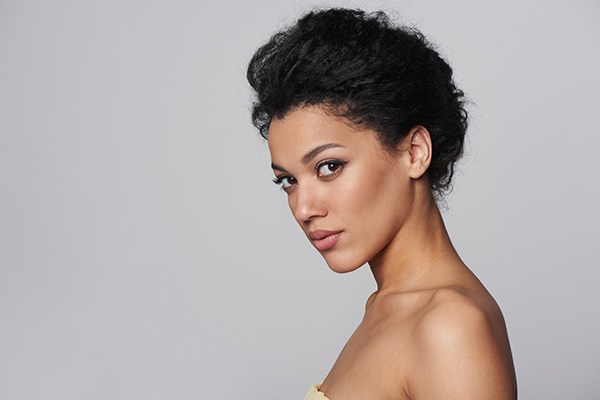
A subtle yet integral aspect of a successful rhinoplasty takes into account the radix nasi or uppermost part of the nose that sits between the eyes. While the radix nasi is not the most prominent area of the nose for rhinoplasty, it is an extremely important aspect of the nose to achieve a captivating harmony in the entire face. It’s an area that doesn’t usually get noticed unless there is an abnormality. People usually don’t compliment someone on having an alluring radix nasi, yet an unbalanced radix nasi will disrupt facial balance and become noticeable for the wrong reasons. Careful correction is needed in cases where the initial rhinoplasty missed the mark in balancing the radix nasi.
Advanced Nasal Tip Sculpting
The projection and shape of the nasal tip are often seen as a major factor in beautiful faces. Attention must be paid to the sculpting of the nasal tip or conditions such as pollybeak abnormalities (when the nose resembles a parrot’s beak) may develop. Usually, the advanced method required to fix a pollybeak is raising or lowering the bridge of the nose. Other issues that might result from an initial rhinoplasty are crooked nasal tips or over/under projection of the tip. In these cases, it’s necessary to rebuild the nasal tip to achieve the patient’s desired result. Revision tip sculpting is an advanced technique that relies on experience and deep knowledge of nasal anatomy. It should not be attempted by beginners, but rather truly seasoned rhinoplasty practitioners.
Ethnic Rhinoplasty

One complaint from some ethnic rhinoplasty patients is that their initial procedure doesn’t appear natural. Unnatural rhinoplasties often result from a surgeon without a broad understanding of what makes for a beautiful face on each individual. If there is one procedure that needs to be completely customized for each patient, it is rhinoplasty. Some unnatural results are due to a surgeon not taking into account specific details of a patient’s ethnicity and how their nose appears in relation to other facial features.
Profiloplasty
Profiloplasty is not a specific procedure but a method of enhancing the entire face and performing all techniques in harmony with this goal. It unifies technical skill with the artistic vision possessed by the very best in cosmetic surgery. Dr Frati continually seeks to gather new knowledge and incorporate them into his practice of profiloplasty.
Healthy Recovery
Your recovery instructions after an advanced revision rhinoplasty will be highly personalized. But some recurring themes will apply to all patients. First, during the first 12 hours, you should remain vertical. This is important to allow the component of the nose to settle in. You will likely wear a nasal splint for about a week. Please do not remove this early as it may compromise your results. Make sure you take the full course of your prescribed medication as directed.
Breathtaking Results
As rhinoplasty is such a difficult procedure, revision rhinoplasties should only be performed by the most experienced and successful cosmetic surgeons. When performed by surgeons with the knowledge and technique to correct issues that resulted from the initial rhinoplasty, patient satisfaction is significant.[6] To glimpse what our generous patients have said about Dr Frati, please visit our patient reviews. You can also follow our feed on Instagram for recent before-and-after photos and updates from our gracious patients.
FAQ
How Much Does Revision Rhinoplasty Cost in London and Manchester?
We can’t quote a price online because revision rhinoplasties can vary greatly in how involved they might be. Some revisions requiring advanced techniques might be relatively simple while others might require a much greater time commitment.
References
- Bouaoud, J., Loustau, M., & Belloc, J. B. (2018). Functional and Aesthetic Factors Associated with Revision of Rhinoplasty. Plastic and reconstructive surgery. Global open, 6(9), e1884. https://doi.org/10.1097/GOX.0000000000001884
- Guyuron, B. (2011). Mastering Rhinoplasty: A Comprehensive Atlas of Surgical Techniques with Integrated Video Clips, 2nd Edition. Plastic and Reconstructive Surgery, 127(5), 2116-2117. doi:10.1097/prs.0b013e318216f20b
- Manafi, A., Eslami Shahr Babaki, A., Mehrabani, G., Shahlaee, A., & Manafi, A. (2013). Can we add auricular composite graft to our rhinoplasty armamentarium?. World journal of plastic surgery, 2(1), 33–40. PMID: 25489502
- Bussi, M., Palonta, F., & Toma, S. (2013). Grafting in revision rhinoplasty. Acta otorhinolaryngologica Italica : organo ufficiale della Societa italiana di otorinolaringologia e chirurgia cervico-facciale, 33(3), 183–189. PMID: 23853414
- Olivier Gerbault, Rollin K Daniel, Peter Palhazi, Aaron M Kosins. (2018). Reassessing Surgical Management of the Bony Vault in Rhinoplasty, Aesthetic Surgery Journal, Volume 38, Issue 6, June 2018, Pages 590–602. https://doi.org/10.1093/asj/sjx246
- Abbas O. L. (2016). Revision rhinoplasty: measurement of patient-reported outcomes and analysis of predictive factors. SpringerPlus, 5(1), 1472. https://doi.org/10.1186/s40064-016-3166-5











